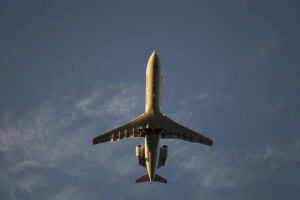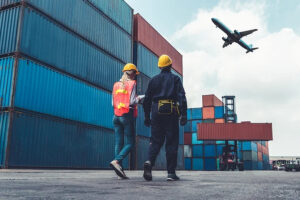
FedEx woes reflect a bumpy ride for the global economy – and for air freight
Gas prices in Europe skyrocketing. Lockdowns in China lingering. Russia losing ground but now seeking to annexe chunks of Ukraine. Countries like the UK responding with huge subsidies for energy consumers – and large tax cuts to boot – massively increasing their fiscal deficits, and shaking the confidence of markets. Central banks also responding – not with more monetary largesse this time, but with interest rates rising sharply. Nevertheless, still leaving a serious threat of inflation running out of control. And how is all this being reflected in air freight markets – often a leading indicator for the global economic outlook? Well, the air cargo sector is certainly looking a little edgy and nervous. Prices have been slipping for a while, with the overall Baltic Air Freight Index (BAI00) – calculated by TAC Index – now down by some -24.5% year-on-year to 26 September, after another drop of -5.3% in the latest week. Normally, at this time of year, prices tend firm up – as the air freight sector gears up for peak season, when demand traditionally rises in the run up to Thanksgiving, Black Friday, Christmas and New Year. But this year, prices have not been rising but slipping for many weeks. And even a recent rise in the previous week, sources suggested, tended to reflect longer term contracts – prevalent on many of the major routes – rather than spot prices, which were continuing to trend lower. The Baltic air freight indices for almost all of the major outbound locations fell on the latest weekly data – with Shanghai (BAI80) down -8.4% WoW, Hong Kong (BAI30) falling -1.9%, Frankfurt (BAI20) down -3.9% and Chicago (BAI50) off a steep -17.7%. London (BAI40) was the one exception with a modest gain +3.0%. But price trends out of other locations, where more of the market is conducted at spot rates, were more mixed. India to US routes, for instance, fell -4.0% on the latest week – leaving them languishing by -33.3% YoY, a bigger drop than on the Baltic BAI00 index. Vietnam to US routes, on the other hand, did gain a modest +2.9% WoW – but the YoY decline on those routes was still looking very steep at -40.3%. Earlier in the year, when air freight prices were still high or rising, many market watchers had been expecting to see the very opposite of those trends. With local lockdowns – and Covid policies – continuing to disrupt supply chains from important manufacturing centres like Shanghai and Shenzhen, many had expected business to move where possible via other locations such as Vietnam. But that doesn’t seem to have happened – certainly not to much of an extent. And it is indeed a murky outlook ahead – as the recent Q1 results from FedEx, which surprised the market, arguably underlined. FedEx announced a miss on projected earnings of some $500 million – widely described as ‘of epic proportions’ – with the company issuing a profit warning that slashed its share price by more than -21% in a single day. Industry observers pointed to various factors – not least a loss of business due to disintermediation caused by other players such as Amazon taking business away – for the troubles at FedEx. But the weaker recent market will surely not have been helping, with FedEx CEO Raj Subramaniam forced to respond with an urgent plan to introduce cost savings going forward. To be fair, the market does present a complicated picture – as highlighted by Marie-Christina Lombard, CEO of Geodis, when presenting her company’s first-half results in September. Reflecting on what had been a period of strong growth in the first half for Geodis in terms of both revenues and profits, Lombard also highlighted that rates had already been falling in recent months for air freight as well as for ocean traffic. That said, there were some areas where demand remained strong – notably in the automotive sector, according to Lombard. And although e-commerce sector volumes had been weaker than expected, she still expected some uptick to be coming as usually happens by Q4. That may yet pan out, but it seems highly likely to be a bumpy ride ahead. Read our freight blog for the latest insights and trends in the logistics industry.



